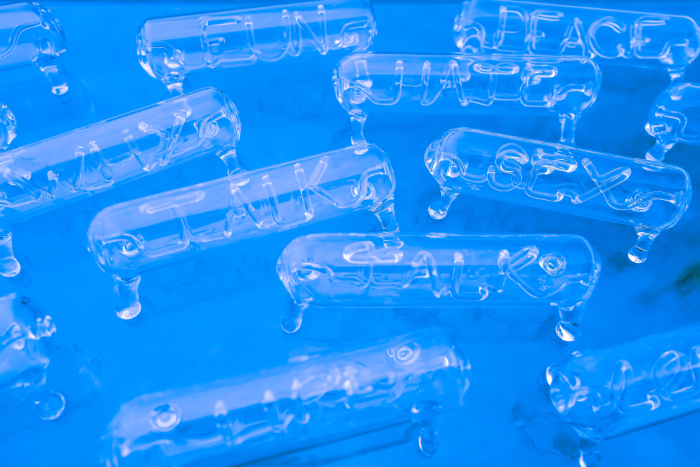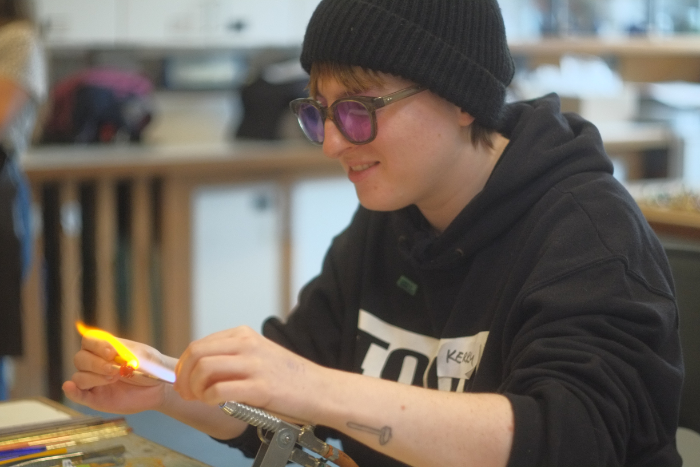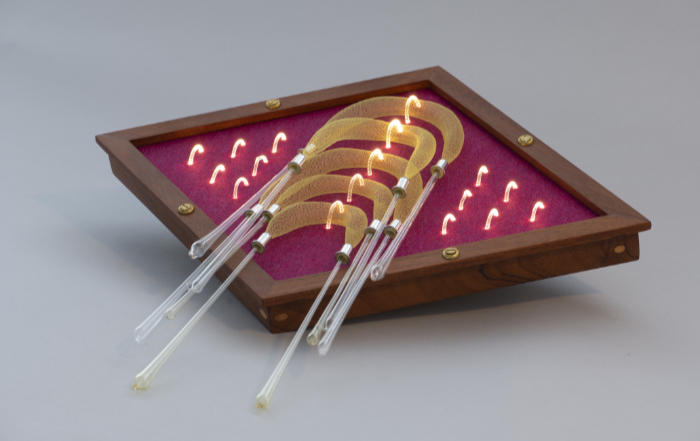
Materials Girl: waste not, want not
Helen Pailing was drawn to glass lampworking as a result of her interest in creating sculptural textiles. Her desire to use found and ‘waste’ materials in her embroidery course carried across to her work with glass. Linda Banks finds out more.
You started your career in embroidery. What led you to start working with glass?
My BA was in Embroidery (at Manchester Metropolitan University), a course that promoted stitch-based work in the broadest sense. Although hand and machine embroidery were taught, I tended to make sculptural forms out of threads and wires, and used knotting and binding techniques, as opposed to more traditional embroidery. It was during this course that I started to use found and ‘waste’ materials, initially because this was an affordable way to work large scale and experiment with multiples.

Coincidently it was textiles that brought me to glass. I was researching tenterhooks – metal hooks used to hold fabric under tension after cloth had been woven – and I wanted to make them out of glass. I was living in Northumberland at the time (on a residency with Visual Arts in Rural Communities) and I was introduced to lampworking at Wearside Glass Sculptures, located at the National Glass Centre (NGC) in Sunderland. I was immediately drawn to the intricate and unique glass forms that were a by-product of the process. Brian Jones and Norman Veitch gave me boxes of their glass ‘waste’ to work with and this led me to apply for a practice-based PhD focused on ‘recrafting waste’.
What glass techniques have you used and which do you prefer?
Lampworking is the technique I am most familiar with, thanks to Brian, Norman and Zoe Garner at the NGC. Plus, I did an intensive course at North Lands Creative with Ian Pearson back in 2017. However, I would still say I am at a basic level. What appeals to me the most about lampworking is its similarities with textiles – using scissors, tweezers, making/using line, spinning – I enjoy the scale and that multiples can be made relatively quickly. I also like that there is an immediacy with lampworking. What puts me off some of the other techniques is the long process and need for specialist equipment.
I would love to learn more about stained glass, and think how I could incorporate this into my sculptures.

What is your creative approach? Do you draw your ideas out or dive straight in with the materials?
It is the materials that almost always lead the ideas. I often say that I am working in collaboration with materials; through haptic logic, I figure out what feels right. I really enjoy this part of the creative process – having a space with materials all around and just seeing what might go together. It is especially pleasing when something that I’ve saved is just the right fit for a new assemblage. My making often relies on chance encounters and surprise gifts from people that know me and my work. For example, I’ve recently collected pieces of a Victorian mirror that a friend accidently smashed but could not bear to throw away. I know it will find its way into a piece of work…one day!
Sometimes the sketchbook is where ideas evolve, especially when the work is more site-responsive or I am working in a set space where the object needs more practical design thinking, such as where the plug will go.

What inspires your work?
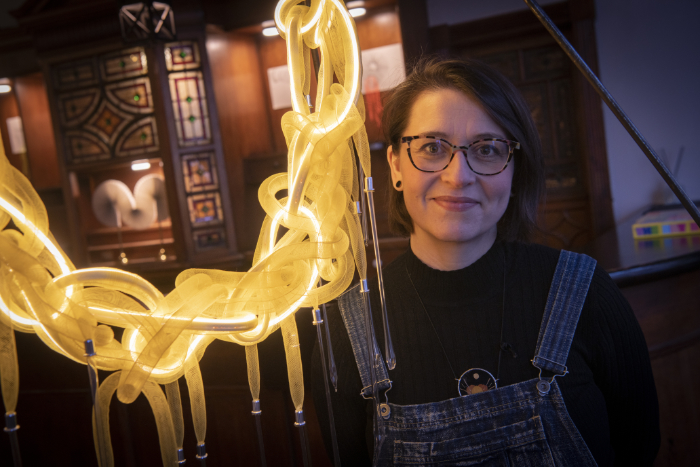
Once I have a new material or idea then the objects and their history tend to inspire the new creations. In a recent solo show, ‘Rare Bird’, in a gallery based in the port of Blyth, I was thinking of the site of the exhibition in a place where the industry meets the sea. Blyth still has lots of industrial sites and towering over the gallery is a huge wind turbine. All this filtered into the making of the work; the clash or tension between the natural and the machine made. I’m interested in the energy within the objects I make; they have personality and somehow feel alive.
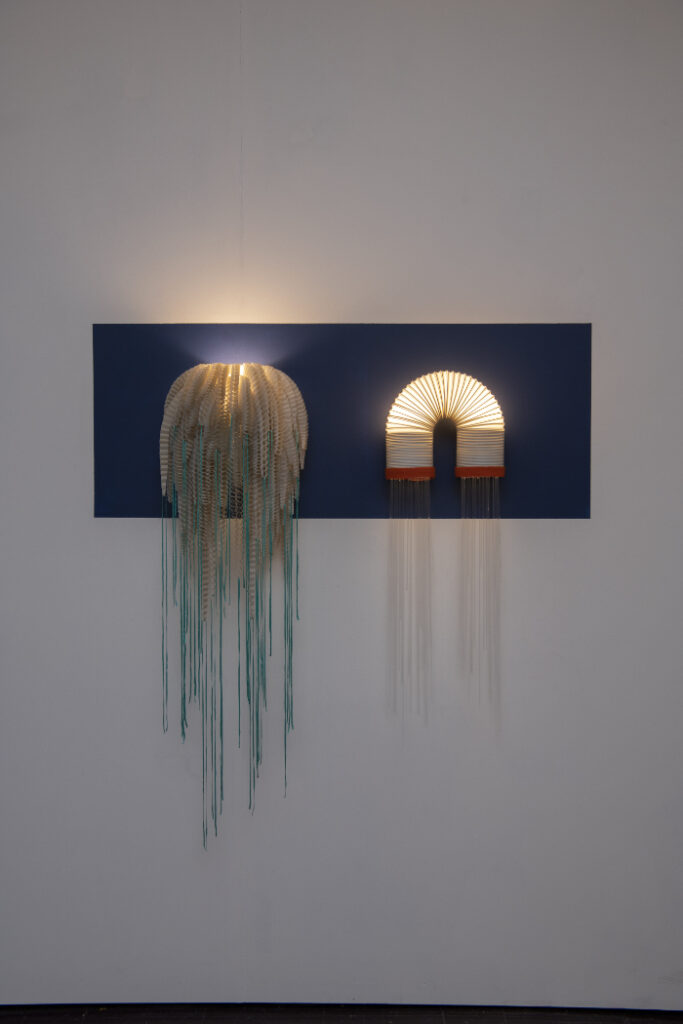
What message(s) do you want to convey through your art?
One aim is for my artworks is to serve as a catalyst for changing attitudes towards waste materials, to energise the audience to take action or to motivate people to reform behaviours. This is an ‘activate’ art strategy, according to Linda Weintraub in her book TO LIFE! I drew upon Linda’s book when studying for my PhD ‘Recrafting waste using a stitch-based methodology: A collaboration between makers and matter’, which I completed in 2019, with thanks to my supervisor Jeff Sarmiento. Another nice quote from that book talks about how we’re ultimately all made of the same ‘stuff’:
‘Making material decisions from an ecocentric perspective means acknowledging that a finite stockpile of resources on the Earth compromises humanity’s shared inheritance with all other life forms. What we are and all we own are fabricated out of this common pool. Even the molecules that comprise our bodies are merely on loan from the ecosystem. Living organisms depend upon the cycling of a shared inventory of raw materials to perpetrate life.’ (Weintraub, 2012, p. 44)
Ultimately, I suppose I hope to share a love for making and to celebrate the material world.
Do you have a favourite piece you have made? Why is it your favourite?
I particularly enjoyed how so many elements came together to make the ‘Adorn’ chandelier, which was a commission from the NGC for the atrium. Almost 1,000 pieces of salvaged borosilicate were used to make the chandelier, which I saw as an adornment for the building. The waste glass was physically and metaphorically elevated and celebrated. The rope used to hang the piece is a nod to the rope-making heritage of the area and makes reference to the ropes and pullies still used in the dock on the other side of the River Wear.

Each piece of glass was wrapped in copper tape thanks to many volunteers, including staff at the NGC, as well as friends and family. I saw the act of wrapping as a way to care for this discarded glass. I drew upon my father’s and brother’s engineering knowledge to create the frame and mechanism to hold the piece up. Zoe Garner and I spent hours ‘recrafting waste’, lampworking small glass hoops to each piece of glass. It was great to work on the installation, alongside Matt Jobling and Seb Trend, which took a week of work after hours up a cherry picker.
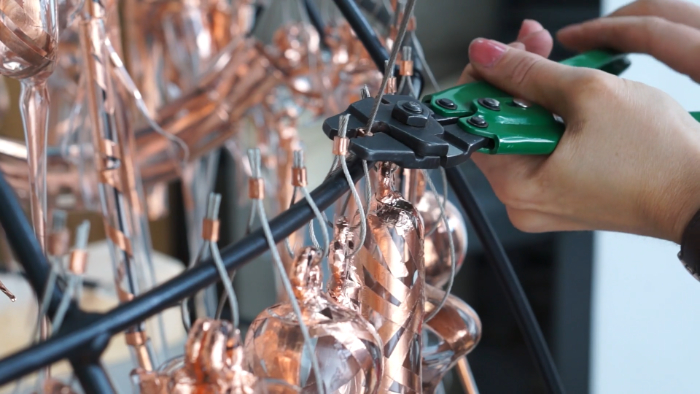
Do you have a career highlight?
My career highlight must be the acquisition of four of my pieces by the Victoria and Albert Museum (V&A). The artworks are all part of my ‘recrafting waste glass’ series and should be on display for visitors to see at the museum soon. I used to love trips to The V&A as a child and spent a lot of time there while studying my MA (Designer Maker) at Camberwell (UAL). It is such a privilege and honour to know my work will be cared for and sit alongside that of some incredible artists and makers from all over the world.

Where is your glass practice heading next?
In early March 2023 I exhibited new pieces at Collect art fair as part of ‘Collect Open’. These works incorporated salvaged glass and light. I would like to further explore this combination and see where light and glass takes me. I’m also keen to learn more skills – both in glass and in other crafts, such as basketry.
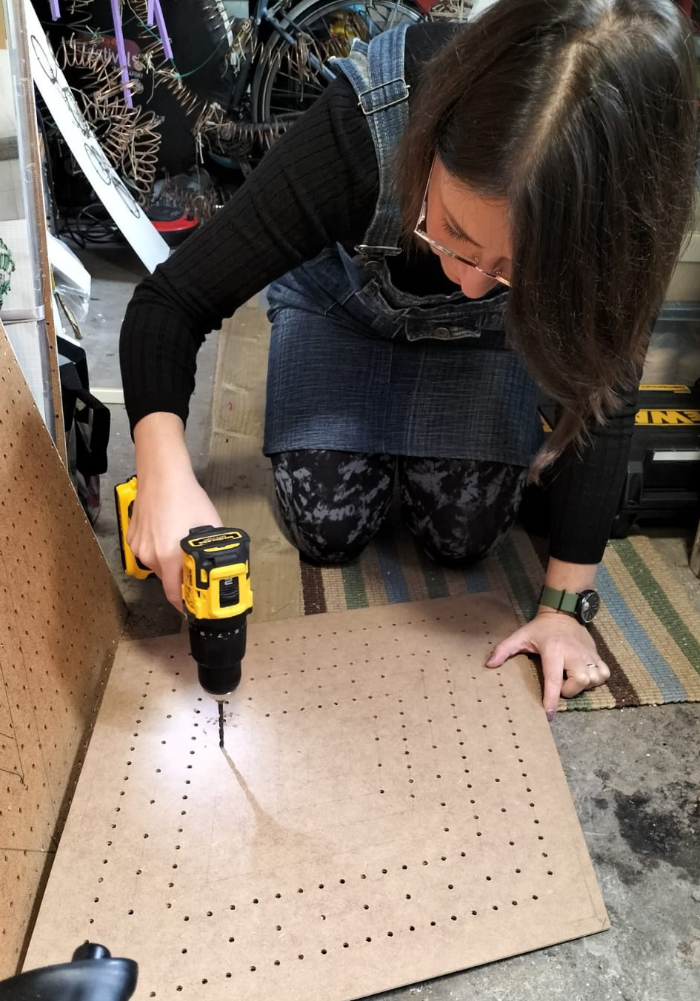
Find out more about Helen Mailing via her website: https://helenpailing.com
Main feature image: ‘Brooch 2’ appeared in the ‘Collect Open’ exhibition in early March 2023, at Somerset House, London. It is made from salvaged glass, rivets, padauk and crinoline. Photo: Colin Davison.
